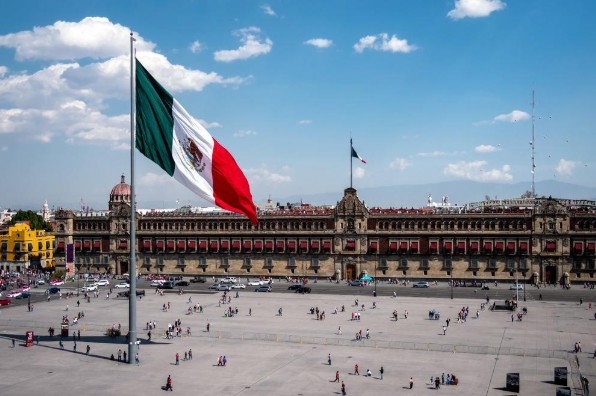
India
India is a land where chaos dances with serenity, where ancient traditions pulse beneath the rhythm of modernity, and where every corner whispers tales older than time. At seventeen, I’ve wandered its vibrant streets—dodging rickshaws in Delhi’s tangled alleys, sipping chai with strangers in Rajasthan’s golden dunes, and gazing at the Taj Mahal as the sun melted into the horizon. Each moment felt like stepping into a living storybook, yet beneath the enchantment, a quiet question tugged at me: What does it mean to travel ethically in a place so rich, so fragile, and so fiercely alive?
Travel in India isn’t just a journey—it’s a delicate balance between awe and accountability. It’s the thrill of discovery shadowed by the weight of privilege. With tourism booming—over 10 million foreign visitors arrived in 2019, according to the Ministry of Tourism—the tension between exploration and exploitation grows sharper. This essay explores that balance, weaving my own experiences with research and reflection to argue that ethical travel in India isn’t a limitation but a path to deeper connection. This is an invitation to wander with purpose, to cherish a land that offers so much, while ensuring it thrives for generations to come.
The Weight of Footsteps: Overtourism and India’s Treasures
My first brush with travel’s dual nature came in Varanasi, one of the world’s oldest living cities. I arrived eager to see the Ganges at dawn, where devotees bathed in its holy waters. But as I squeezed through crowds of tourists, cameras flashing like fireworks, I felt less like a witness and more like an invader. The ghats, once a haven of prayer, had morphed into a tourist spectacle—and I was complicit.
This isn’t unique to Varanasi. India’s treasures—the pink forts of Jaipur, the sun-drenched beaches of Goa, the silent monasteries of Ladakh—buckle under their own allure. In 2018, the Taj Mahal hosted 7 million visitors, straining its delicate marble and Agra’s infrastructure (The Times of India). Overtourism doesn’t just wear down stone—it chips away at spirit, turning sacred spaces into mere photo ops. The answer isn’t to abandon these wonders but to approach them differently. In Kerala, I traded overcrowded houseboats for a homestay in the backwaters. My host, Ravi, a fisherman, taught me to cast nets at sunrise. His tales of monsoons and migrations outshone any guidebook, and my money supported his village, not a distant corporation.
Cultural Threads: Weaving Respect into Every Step
Ethical travel in India goes beyond sustainability—it demands cultural humility. With a mosaic of traditions as vast as its landscapes, India asks travelers to listen, learn, and sometimes step back.
In Rajasthan, I stumbled into a wedding near Jodhpur. The air buzzed with marigolds and music, and I was pulled into the celebration. But when I lifted my camera to snap a dancer’s twirl, an elder gently stopped me. “This is our joy, not your story,” he said, his smile kind but firm. It stung, but he was right—I’d crossed a line, treating a living moment as a souvenir.
Respect begins with small gestures: saying “namaste” in the north or “vanakkam” in the south, dressing modestly at temples, asking permission before photographing. It’s about seeing locals as hosts, not props. In Ladakh, I sat silently in a monastery as monks chanted, their voices echoing off stone walls. I didn’t grasp the words, but I felt the sanctity. Some experiences are meant to be felt, not captured.
The Green Dilemma: India’s Environment on the Line
India stands at an environmental tipping point. Himalayan glaciers shrink under climate pressure, while tigers in Ranthambore stalk dwindling forests. Tourism can either heal or harm.
Trekking to Uttarakhand’s Valley of Flowers, a UNESCO World Heritage site, I was struck by its beauty—and its blemishes. Amid vibrant meadows lay trails littered with plastic wrappers and bottles, scars left by careless travelers. It hit hard. Yet, hope emerged in efforts like the Eco Tourism Development Corporation’s treks, where participants plant trees and clear waste. I joined one, hauling trash down the mountain. It wasn’t picturesque, but it mattered. Sustainable travel here isn’t just about what we see—it’s about what we preserve.
Wildlife tells a similar story. In Bandhavgarh National Park, I glimpsed a tiger at dawn—a breathtaking sight tinged with concern. Poaching and habitat loss threaten these majestic creatures, and while tourism funds conservation, it can also disrupt ecosystems. Ethical safaris, like those by Pugdundee Safaris, prioritize animal welfare over Instagram shots. I chose one, and though my photo was blurry, my conscience was clear.
The Ripple of Rupees: Empowering Communities
Tourism’s economic impact in India is vast, supporting millions—from street vendors to artisans. But where we spend shapes who benefits. In Agra, I skipped the tourist traps for a women’s cooperative crafting marble inlays, their hands carrying centuries of skill. My purchase—a tiny elephant—felt like a connection, not just a keepsake.
In Goa, I stayed at a guesthouse run by Maria, a fisherwoman. Over her home-cooked fish curry, she shared stories of the sea. My stay helped fund her daughter’s schooling, not a hotel chain’s profits. A 2021 Journal of Sustainable Tourism study found community-based tourism can boost local incomes by up to 40%. Ethical travel isn’t handouts—it’s partnership.
The Privilege of Passage: A Call to Action
Let’s face it: traveling in India is a privilege. In 2019, just 1.4% of Indians flew domestically (Directorate General of Civil Aviation), while foreigners like me jetted in. That privilege carries responsibility. It’s opting for trains over planes when possible, reducing emissions while soaking in the countryside. It’s backing efforts like the Archaeological Survey of India’s visitor caps at fragile sites.
But the deepest responsibility is taking India’s lessons home. The trash in Uttarakhand pushed me to ditch plastic bottles. Agra’s artisans inspired me to buy fair-trade. Travel’s greatest gift isn’t the postcard moments—it’s the change it sparks within us.
Wandering with Purpose: A New Way Forward
To my fellow travelers: India gives generously, but it deserves care in return. Tread lightly—leave the selfie stick behind at sacred sites, learn a few local words, and listen more than you talk. Choose the homestay over the hotel, the local guide over the packaged tour. When you go, take only memories and leave only thanks.
Ethical travel in India isn’t a rulebook—it’s a mindset. Every rupee, every step, every encounter weaves into its story. Let’s be travelers who don’t just pass through but uplift, who don’t just take but give back. India isn’t merely a destination—it’s a teacher, a mirror, a home for the soul.
Conclusion
As I dream of my next trip to India, I pack more than a suitcase—I pack a commitment. To explore with awareness, to honor its people and places, to leave each spot a little better. Travel’s true magic isn’t in the sights—it’s in the stories we share, the lessons we carry, and the world we help sustain. Let’s make every journey a step toward a brighter, kinder future.
By: Neeti Singh
Write and Win: Participate in Creative writing Contest & International Essay Contest and win fabulous prizes.


